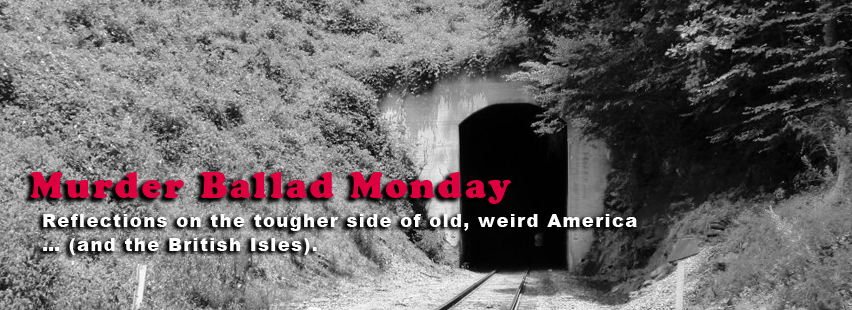Linden Arden and the Belfast Cowboy
<<<Back to page 1
Morrison’s voice and the momentum of the arrangement take these partially connected scenes and sweep them into an emotionally overwhelming, yet incomplete, story. You can feel the besotted exile and the outlaw loneliness, contrasted with the churchgoing man who cared for the little children. You can feel the sudden violence and the redemption. “Cleaved their heads off with a hatchet” appears with brutal abruptness, like violence in a Quentin Tarantino film, and contrasts with the beauty of the music.
Raves and Reviews
Elvis Costello recommended Veedon Fleece as the 9 p.m. music in a Vanity Fair, article recommending music for every hour of the day, singling out “Linden Arden” for special mention. He says, “These songs are beautiful and unfathomable.” (Perhaps Greil Marcus has an ally.) Costello tells an amusing story in his memoir Unfaithful Music and Disappearing Ink, of a far-too-early breakfast conversation with Morrison where one nagging question kept coming to him. “But,” he writes, “given the hour and the cotton wool constitution of my tongue, I thought this probably wasn’t the time to ask what the hell was going on in ‘Linden Arden Stole the Highlights’.”
Costello’s question wouldn’t get very far anyway. David Burke cites Morrison’s enigmatic description of the song in A Sense of Wonder: Van Morrison’s Ireland:
“‘[It’s] about an image of an Irish-American living in San Franscisco. It’s really a hard man type of thing.’ Yet in 2012 [Morrison] professed not to know what it was about. ‘It was a house I was staying in at the time. It was another way of writing songs. I just seemed to be picking stuff up, different ideas from this house. But I don’t actually know what it’s about. In fact, I don’t have a clue what most of that album is about. I think I was picking those songs out of the air. Psychic air, whatever you want to call it. They were fictional characters. Sometimes a place will inspire something and you get ideas without knowing what they mean.'”
Morrison composed most of the songs for Veedon Fleece in Ireland, following about eight years living in the U.S. Some critics note that this return to the “Old Country” also followed a contentious divorce and custody battle. Aside from being unseemly, any biographically informed criticism here would prove unhelpful and unrewarding, both for the album and the song. Morrison is not so easily pinned down.
Burke views Veedon Fleece as the most Irish of Morrison’s original albums, but notes that Morrison explores Ireland from an outsider’s perspective, invoking the theme of exile. Morrison at the time was touring the Republic of Ireland, not returning to his native Belfast. Burke mentions that some listeners see “Linden Arden” and “Who Was That Masked Man” as subtly veiled comment on the sectarian violence of Northern Ireland. Sinéad O’Connor told a radio presenter in 1997:
“‘Who Was That Masked Man’ does deal with a lot of the political situation…. Politically, he’s never approached Ireland, except for me in this one song which I think is an incredible insight into what was going on in those times in his country. Linden Arden is a gangster-type character, and the song is a very subtle comment on what was going on between Ireland and America in terms of assisting what was going on.”
(Burke explains that what was “going on” was the Irish Northern Aid Committee, which was a North American fund raising vehicle for support of the Provisional Irish Republican Army.)
Burke’s own review of Veedon Fleece reads as follows:
“Arguably as seminal a work as Astral Weeks, this is Morrison digging down into the soil of the south, a heretofore unknown Ireland to him. Killarney’s lakes, the streets of Arklow, and Oscar Wilde are all evoked in his version of God’s green land, though the spectre of the savagery up north is never far away, especially on ‘Linden Arden Stole the Highlights’ and ‘Who Was That Masked Man.'”
Burke’s hypothesis further presses the question of what we should make of this artsy piece of incomplete balladry from Van Morrison, and how we might relate it to the broader murder ballad tradition. Marcus’s American judgment that the lyrics are largely irrelevant and Burke’s judgment that they are a very rare piece of political commentary in Morrison’s music presents quite a range of options.
Putting the “Cowboy” in Belfast Cowboy
“Linden Arden” is also a modern song set in a timeless, mythical West. San Francisco may not evoke a High Noon vibe, at least for Americans now; but it is far, far west of Ireland. Although “Linden Arden” is part of an album thick with Irish themes, it is also thick with themes of exile, outlawry, and the ties between Ireland and America (e.g. “Bulbs“). As Brian Hinton notes in Celtic Crossroads: The Art of Van Morrison, icons of the American West such as the Lone Ranger and Geronimo appear in Veedon Fleece‘s opening track, “Fair Play.” Hinton sees Linden Arden as “a man who takes the law into his own hands, just like the Lone Ranger, and there is a Wild West feel to all of this, violence mythologized.” This does ring true, as the American West joins the North Carolina Piedmont and the Targee Street area of 1890s St. Louis, Missouri as American murder balladry’s most fertile territory. It probably excels the other two for invented, as opposed to historical, songs because of the creative and violent potential of a lawless frontier.



